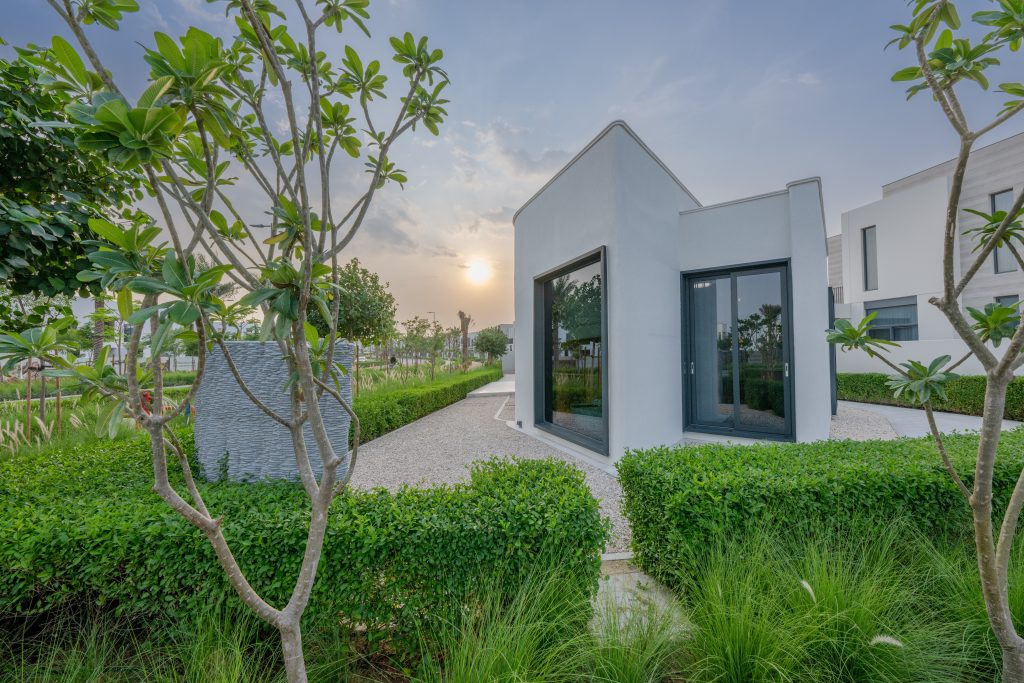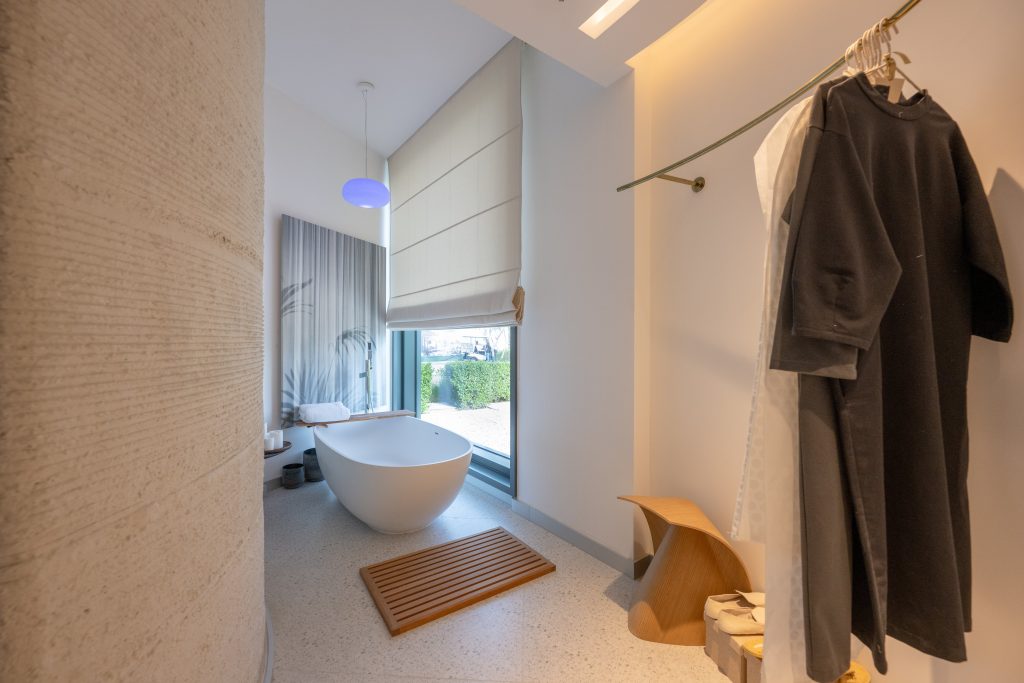On December 6 2023, real estate development company Emaar Properties unveiled Dubai’s first ever 3D printed villa.
First announced in 2019, this construction 3D printing project was delayed due to the COVID-19 pandemic. However, the company has now released the first images of the 202 m2 3D printed home, which includes an integrated car park, three bedrooms, and four bathrooms.
This project aligns with Dubai’s ‘Smart City’ vision, which aims to have 25% of all construction projects 3D printed by 2030.
Emaar is collaborating with construction 3D printing specialist COBOD. and electronics manufacturer Xiaomi to design and 3D print the villa, which will include integration with Xiaomi’s Smart Home technology. The villa was designed by Dubai-based architecture firm U+A.
“Due to the beauty of this project and the many fine details, we are excited to see that the building has finally been revealed. We have waited since 2019 for this to happen and are extremely proud of this project, made by one of the very first BOD2 printers we produced,” commented Henrik Lund-Nielsen, Founder and General Manager at COBOD.
“This project is not just about creating a house; it’s about shaping the future of construction. Our collaboration with Emaar demonstrates how advanced technology can redefine residential living, offering smarter, faster, and more environmentally friendly building solutions.”

Dubai’s first 3D printed villa
In addition to its three bedrooms, four bathrooms, fully equipped kitchen and dining room, and study room, the 3D printed house boasts integration with Xiaomi’s Mobile X AIOT products, which include smart vacuum cleaners, air purifiers, and cameras.
The villa has been constructed using COBOD’s BOD2 3D printer. A gantry based 3D printer optimized for on-site large-format concrete 3D printing, the BOD2 weighs 5390 kg and operates at a sound level of less than 70 dB(A).
This 3D printer has already been used in construction projects around the world. For instance, back in 2020 the BOD2 was leveraged by Germany-based construction company PERI Group to construct a 3D printed three-floor commercial apartment building in Wallenhausen, Germany.

This project marks Emaars first foray into construction 3D printing. According to the company, which has a net asset value of $40 billion USD, additive manufacturing enables it to build faster, more cost effectively, and achieve more distinctive designs.
Notable design details include the extensive use of curved walls and large-scale windows. What’s more, the company claims that its 3D printing methods decrease waste and reduce noise pollution during construction.
Elsewhere in Dubai, the Islamic Affairs and Charitable Activities Department (IACAD) is currently working to construct the world’s first 3D printed mosque to help achieve its future ‘Smart City’ vision.
Currently under construction in Bur Dubai, the mosque will measure 2,000-square-meters, and is set to open its doors to up to 600 worshippers in 2025. Although it will initially cost more to 3D print the mosque over traditional methods, the organizers believe that these expenses will level out in future years.
“The cost is 30 percent higher than building the mosque in the normal way because it is the first of its kind in the world,” commented Ali Al Suwaidi, director of IACAD’s engineering department. “We expect the cost will be similar in the future with 30 years building guarantee.”

Developments in construction 3D printing
Away from Dubai, the use of additive manufacturing for construction applications is a growing field around the world.
Earlier this month, Construction 3D printing firm Mighty Buildings, together with Lawrence Berkeley National Laboratory (LBNL), and Habitat for Humanity, were awarded a $5 million grant from the California Energy Commission. This GFO-22-305 grant seeks to advance the development of sustainable housing solutions for under-resourced communities.
Through this partnership, Mighty Buildings will 3D print the walls of three advanced pre-fabrication low-carbon townhouses in Bay Point California. These walls will be manufactured at the company’s Oakland Factory, with the construction assembly process expected to wrap up within a few days on-site.
Elsewhere, 3D concrete printer provider, CyBe Construction, and the South African Housing & Infrastructure Fund (SAHIF) are leveraging construction 3D printing to address South Africa’s acute housing shortages.
The two partners hope to 3D print sustainable, affordable homes to meet pressing demand for cost-effective housing in the region, contributing toward the United Nations’ goal to provide safe and accessible housing for all by 2030. In South Africa, additive manufacturing has the potential to revolutionize the construction industry, which currently has a backlog of over 2.3 million affordable homes.
Subscribe to the 3D Printing Industry newsletter to keep up to date with the latest 3D printing news. You can also follow us on Twitter, like our Facebook page, and subscribe to the 3D Printing Industry Youtube channel to access more exclusive content.
Are you interested in working in the additive manufacturing industry? Visit 3D Printing Jobs to view a selection of available roles and kickstart your career.


